Sailing the Danish Straits and Kattegat: Picturesque Harbours, Breathtaking Coastlines, and a Rewarding Navigation. The voyage offers a good opportunity to build confidence, sharpen seamanship, and experience the unique character of Northern Europe’s waters.
Highlights

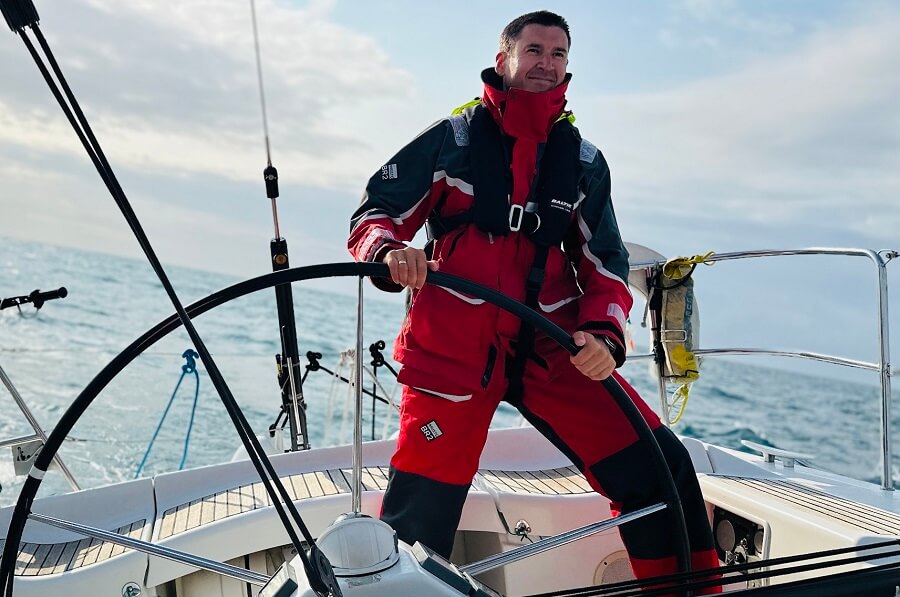
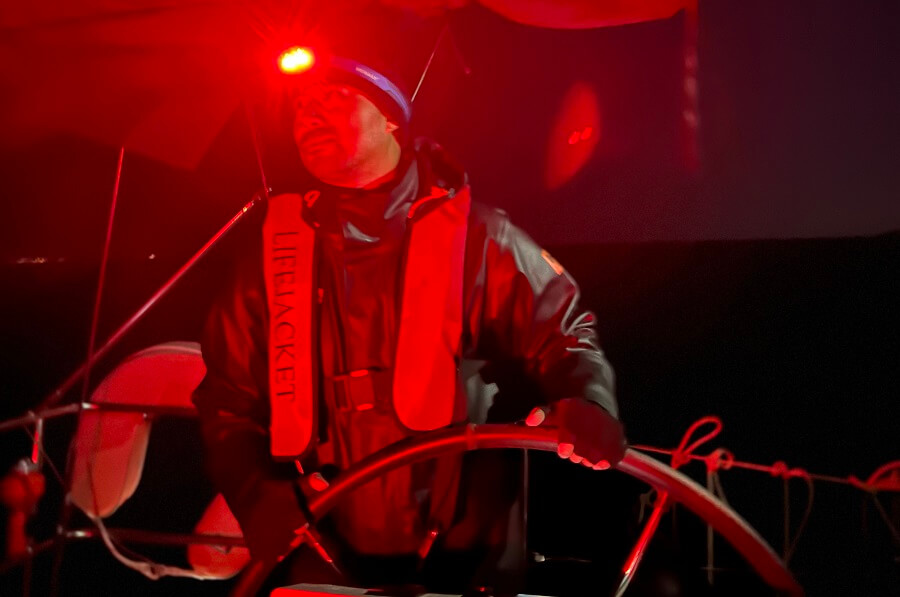
Dates
- Start: 06 September 2025 (Saturday, 11:00) at Flensburg, Germany.
- Finish: 13 September 2025 (Saturday, 09:00) at Flensburg, Germany.
The start and end dates are fixed.
Contribution
The whole trip (8 days) per person:
- 950 Euro for a bunk. The deposit (50% of the balance) is to be paid within one week of booking, the rest 35 days before the start date.
- 150 Euro (15 Euro / day) for consumables. Collected during the joining day for all food consumed onboard, harbour fees and diesel. This is a realistic estimation. Any remainder will be refunded at the end of the trip.
The trip is non-commercial and runs in a friends-sailing manner. The contribution per person is fixed no matter how many people have booked the trip. The trip will run regardless of the number of participants.
What is not included:
- Optional expenses like rental bicycle or food & beverages consumed ashore
- Travel to and from the boat
- Personal travel insurance (recommended) - you can find some recommendations in the FAQ
- Personal laundry (some ports have facilities to do laundry if you need it)
How much to bring in addition?
Generally, you won’t need anything in addition, but this will depend on how much you want to eat in restaurants and spend on other things like souvenirs and tourist attractions. Some people prefer to eat only on the boat and don’t spend anything on restaurants and some prefer to eat outside whenever we are on land. This is very individual.
Who can join
We recommend having at least one week of sailing experience for this trip — but newcomers without prior experience are very welcome to join as well.
You will become an active member of the crew. You will not be just a passenger or a guest. During the voyage you will assist with helming, sail trimming, cooking and all the normal duties of a crew member whilst having the opportunity to learn about weather, routing, navigation, boat handling and many more according to your interests and experience. Above all, it should be fun and recreational for everyone.
In the course of the trip we will maintain a watch system and we will sail during the night. Therefore, there is no fixed lights-off time and your sleeping rhythm will likely be different than at home.
Our main language on board is English. If English is not your native language, and you don’t know the English sailing terms, don’t worry. You will learn the necessary vocabulary in no time while on board.
There will be up to 6 people on board including the skipper.
Travel logistics
How to travel to/from Flensburg
There are flights to Hamburg and Copenhagen. You can take a train from there.
You can find the best flight connections using the following websites:
There is a fast direct train from Hamburg to Flensburg (2h) and from Copenhagen to Flensburg (4h but very scenic). Trains can be booked in Deutsche Bahn).
Skipper
Marcin Wojtyczka: MCA Master 200 GT Unlimited, RYA Yachtmaster Ocean commercially endorsed, RYA Yachtmaster Cruising Instructor
What should you pack
You can download a complete checklist here.
The most important items:
- head torch for night sailing
- boat shoes with a good grip that don’t leave marks on the deck
- foul weather gear (if you have one), otherwise waterproof jacket
- some warmer clothes
- passport
- insurance policy
- payment/credit cards
- phone with charger
- toiletries
Note that there will be bedlinen (pillows, blankets/duvet) on board.
The trip will be focused on cruising and training. In total, we should log up to 420 nautical miles and 80h.
Anticipated route:
Flensburg - Sønderborg - Bågø island - Tunø island - Mariager fjord - Sejerø island - Svenborg - Flensburg
We will try to follow the planned route, but the final itinerary will be decided in association with you, and the crew, in light of the weather, boat and crew conditions at the time. Therefore, the amount of ports we visit, and the amount of nautical miles or hours sailed may differ from what is stated in the description.
We will be maintaining a watch system to ensure everyone is well rested and meals are prepared on time and maintenance is undertaken when necessary. There will be 3 watches with up to 2 people in each watch.
Hanse 388, 2022
The boat has excellent sailing characteristics. She is well equipped, maintained and prepared for offshore sailing. We will inspect the boat thoroughly before the voyage to ensure that every bit of equipment is absolutely ship-shaped.
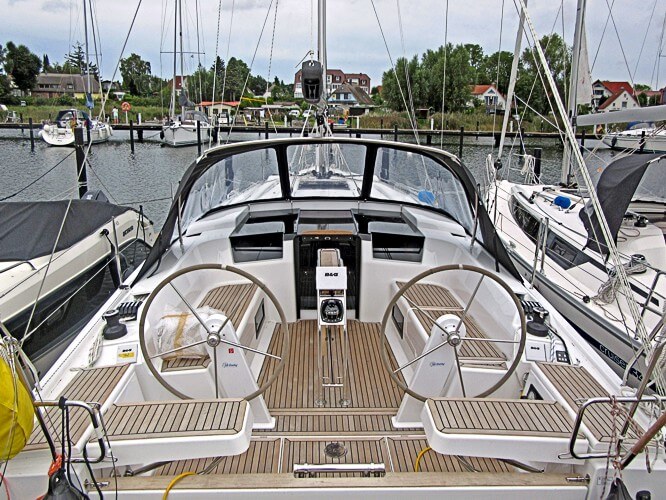
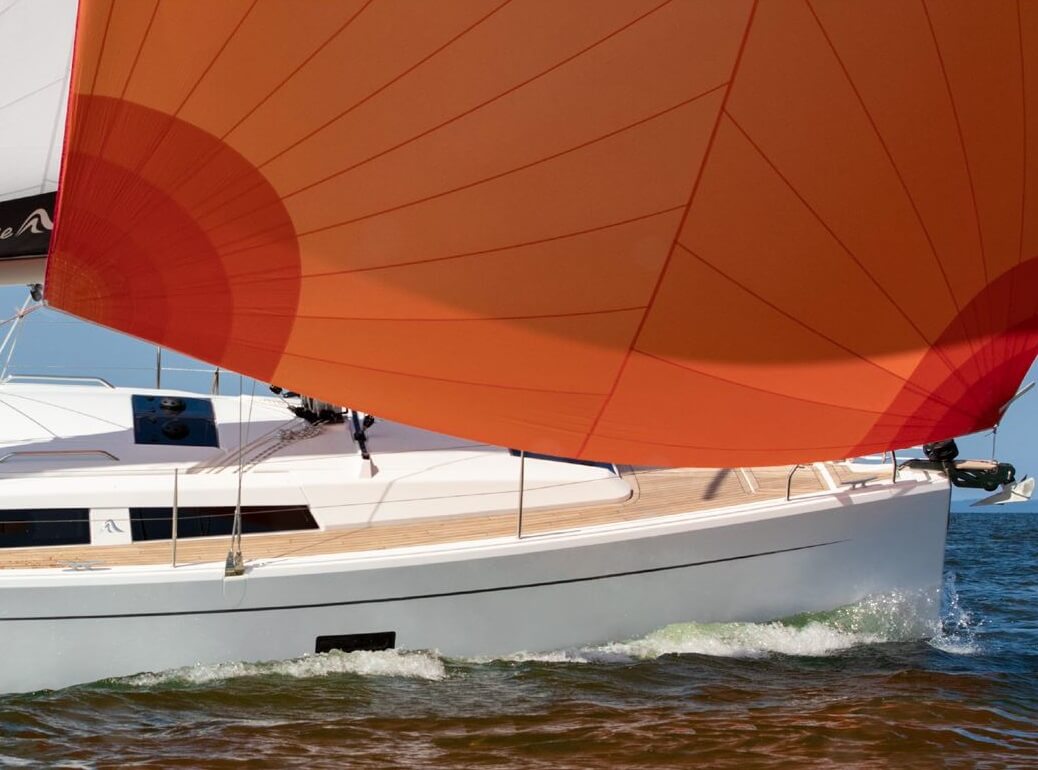
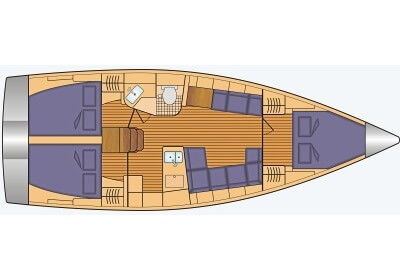
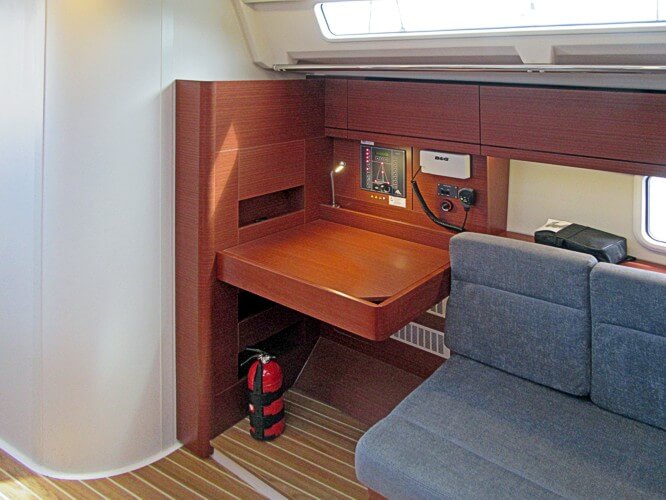
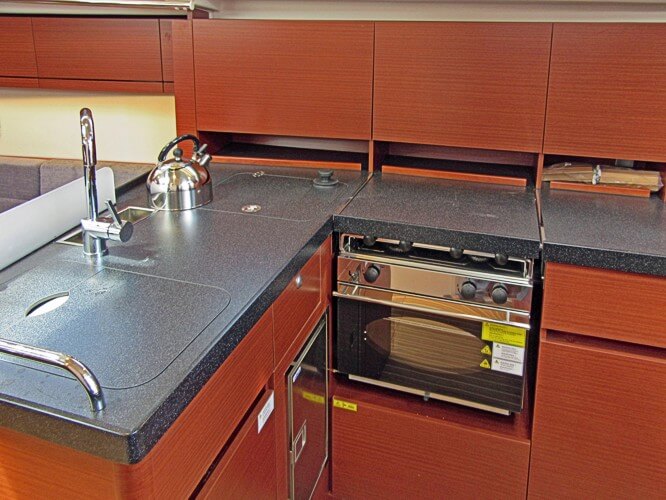
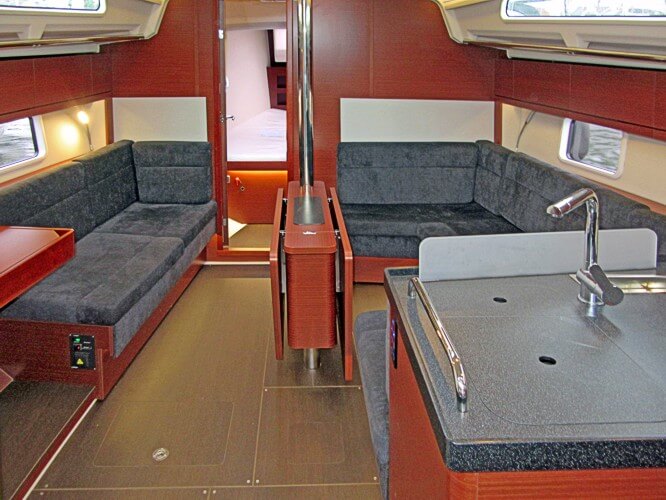
General info:
- Year: 2022
- Type: sailing
- Hull: monohull
- Length (LOA): 11.40 m
- Waterline length (LWL): 10.40 m
- Hull speed: 8.21 kt
- Berths (Bunks): 6+2
- Cabins: 3
- WC / Shower: 1
- Beam: 3.9 m
- Draught: 2.06 m
- Air draft: 17.16 m
- Engine: 27 HP
- Fuel capacity: 160 L (Diesel)
- Water capacity: 295 L
- Displacement: 8.27 t
- Single spade rudder
- 2 steering wheels
- Sails: Fully battened Mainsail 43.50 m2, Furling genoa 28.50 m2, Asymmetric Spinnaker: 121.00 m2, Storm Jib 9.00 m2
- Plastimo drogue
Equipment:
- Autopilot
- Refrigerator
- Stove
- Sprayhood
- Radio/CD/MP3
- Socket 12V
- DSC VHF radio
- Handheld VHF DSC radio
- EPIRB
- AIS
- Radar reflector
- Chart plotter with GPS and digital chartography charts
- Sextant Astra IIIB Deluxe
- PredictWind Offshore app
- Complete set of pilot books, almanacs and charts
- Pillows, bedlinen and towels for each crew member
Average weather conditions:
Air and Sea temperature
The weather conditions at the beginning of September are generally favorable for sailing with relatively mild temperatures and moderate winds. The average temperature during the day should be around 18° C, with a minimum of 12° C and a maximum of 24° C. The sea temperature can be up to 20° C, fine for swimming.
Wind and sea state
The average wind speed in that area in September is 5-6 Bft. The sailing area is located at relatively high latitudes, and frontal depressions are not uncommon.
The route is divided into several offshore passages with lots of night sailing. You will receive a certificate of passage to prove your sea time for sailing licenses. You will be an active member of the crew, and we will provide practical training on board to ensure safety and improve your sailing skills.
We give a great amount of responsibility to each crew member in running the ship so that you can gain a good experience and learn new skills as much or as little as you want. The skipper is an instructor and will find it difficult not to teach or coach anyone who shows the slightest bit of interest.
RYA qualifying passages
If you are an aspiring Skipper or Yachtmaster, it will be an excellent opportunity to gain bluewater miles, practice navigation, pilotage and COLREG skills so that you can be more confident and comfortable when taking a boat out to sea on your own. During the voyage, we can evaulate your current knowledge and provide suggestions for improvement. We can evaluate whether you are at the right level to pass an RYA exam and practice any gaps in your knowledge.
The opportunity will also be there to act as a skipper (with guidance if needed from the skipper) for your RYA Yachtmaster Coastal or RYA Yachtmaster Offshore qualifying 60M passages.
Main topics that you can learn or brush up:
- Maneuvering under sails & engine: berthing, hoisting and lowering sails, reefing, tacking, gybing, sail trim
- Safety: use of liferaft, lifejacket, EPIRB, PLB, AIS beacons, managing emergencies
- Equipment: use of Autopilot and VHF
- Weather forecasts and weather routing
- Offshore & coastal navigation: digital and traditional (including the use of Sextant if of interest)
- Tides
- Night navigation
- Pilotage and passage planning
- ColRegs
- Storm tactics and use of a drogue
- Use of Asymmetric Spinnaker and Storm Jib
- Life on board: organization of watches, nutrition, sleep and risk management
We will try to follow the anticipated route, but on the sea, we need to remain flexible as we cannot plan and anticipate everything. Therefore, your expectation might be different than what you experience, subject to weather, boat and crew conditions and what the majority of the crew wants.
Joining day - Flensburg
We will spend the first day preparing and victualling the yacht, going over the safety routines and practices, getting up to speed with the boat and learning or refreshing all the basic sailing skills before we embark on the journey. Once we slip the lines there will be plenty of occasions to practice tacking, gybing, reefing, boat handling under the engine and all the other key skills we must have.
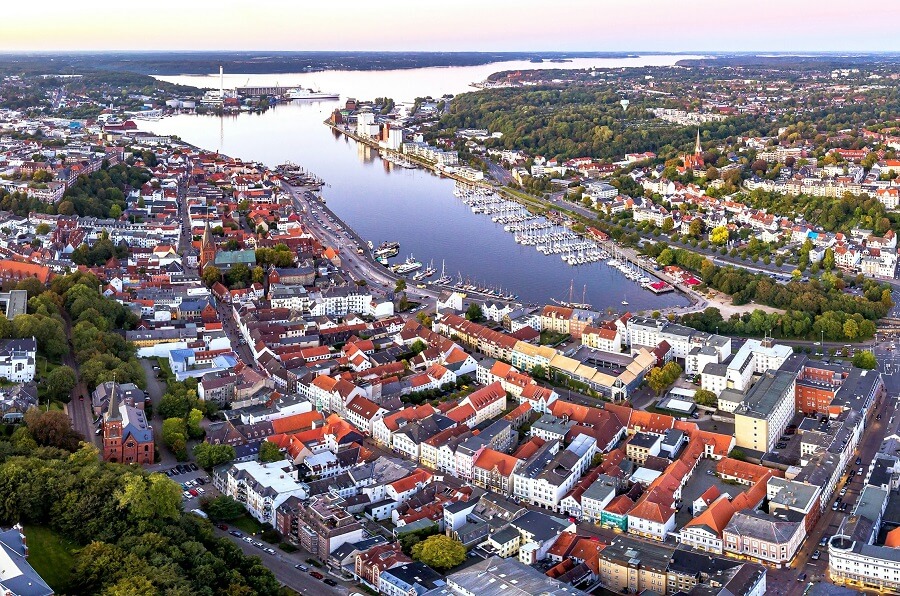
Flensburg
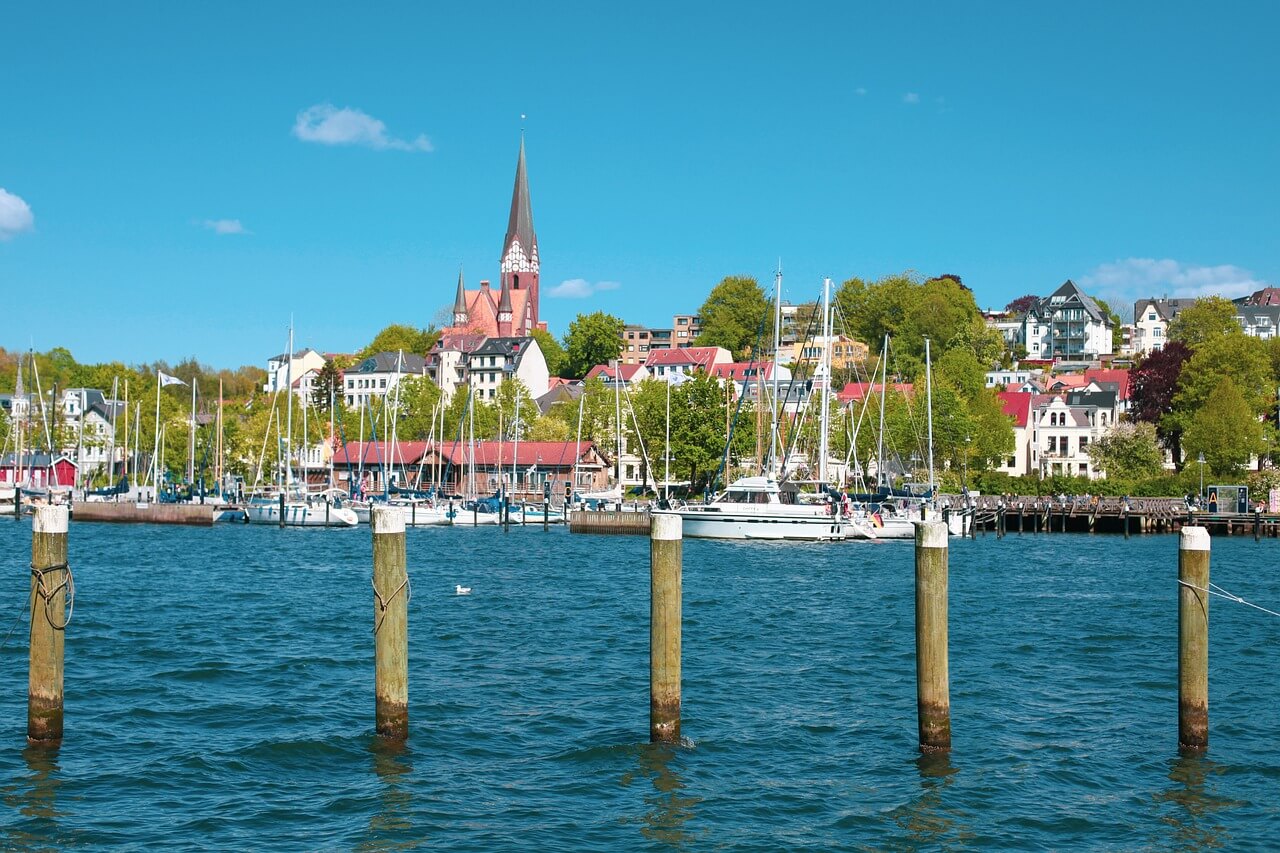
Flensburg Marina
Flensburg is a history port and town with a mixture of Danish and German history and culture. It enjoys the unique privilege of being a gateway to Scandinavia. A tradition from the days when the city belonged to Denmark was the production of rum. Flensburg is also known for its beer and Danish feel. It is located on the Baltic coast at the end of a beautiful Fjord which forms the present-day border between Germany and Denmark.
The town has a significant cultural offering, with five theatres, including its own Symphony Orchestra, several well-respected libraries, Maritime and rum museums, and an extremely well-preserved Old Town, some of which date back to the 12th century.
Sønderborg (22 NM)
Sønderborg is a charming coastal town at the gateway to the Danish South Sea, known for its lively waterfront, historic castle, and welcoming marina.
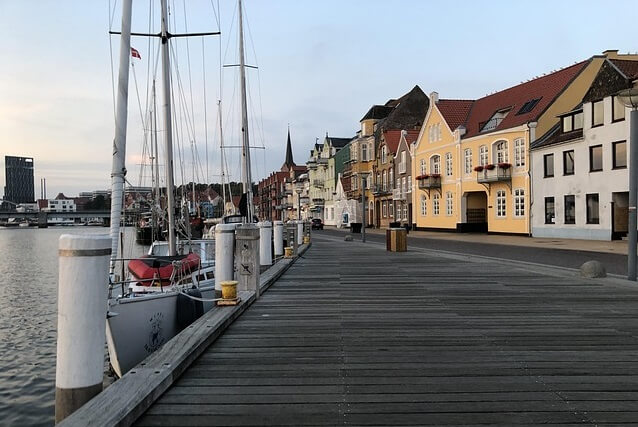
Sønderborg promenade
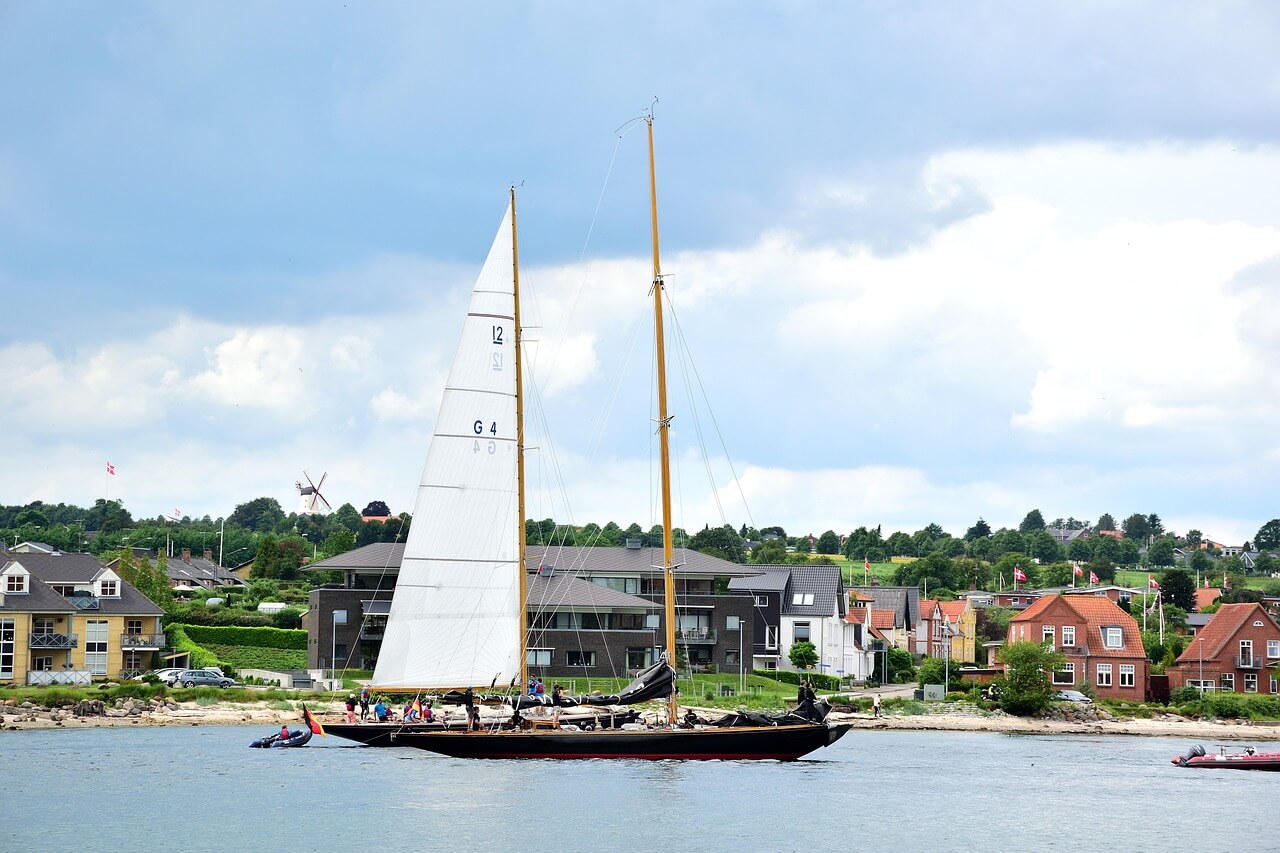
Als Fjord
The nearby Als Fjord offers tranquil waters and scenic sailing, green shorelines that make it a favourite among local and visiting sailors alike.
Bågø island (30 NM)
Bågø is a small, idyllic island in the Little Belt, known for its peaceful atmosphere, rolling meadows, and a charming little harbour popular with visiting sailors.
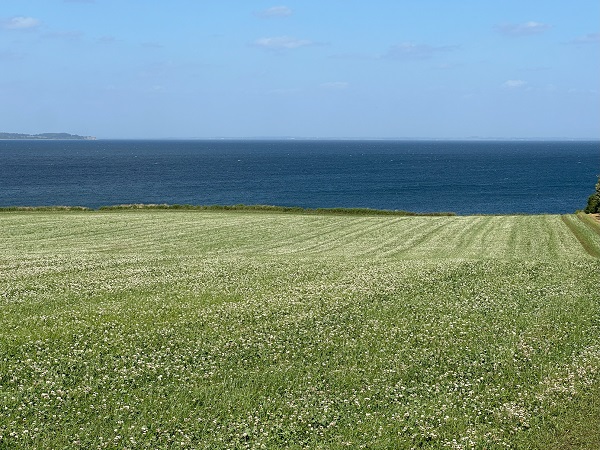
Bågø island
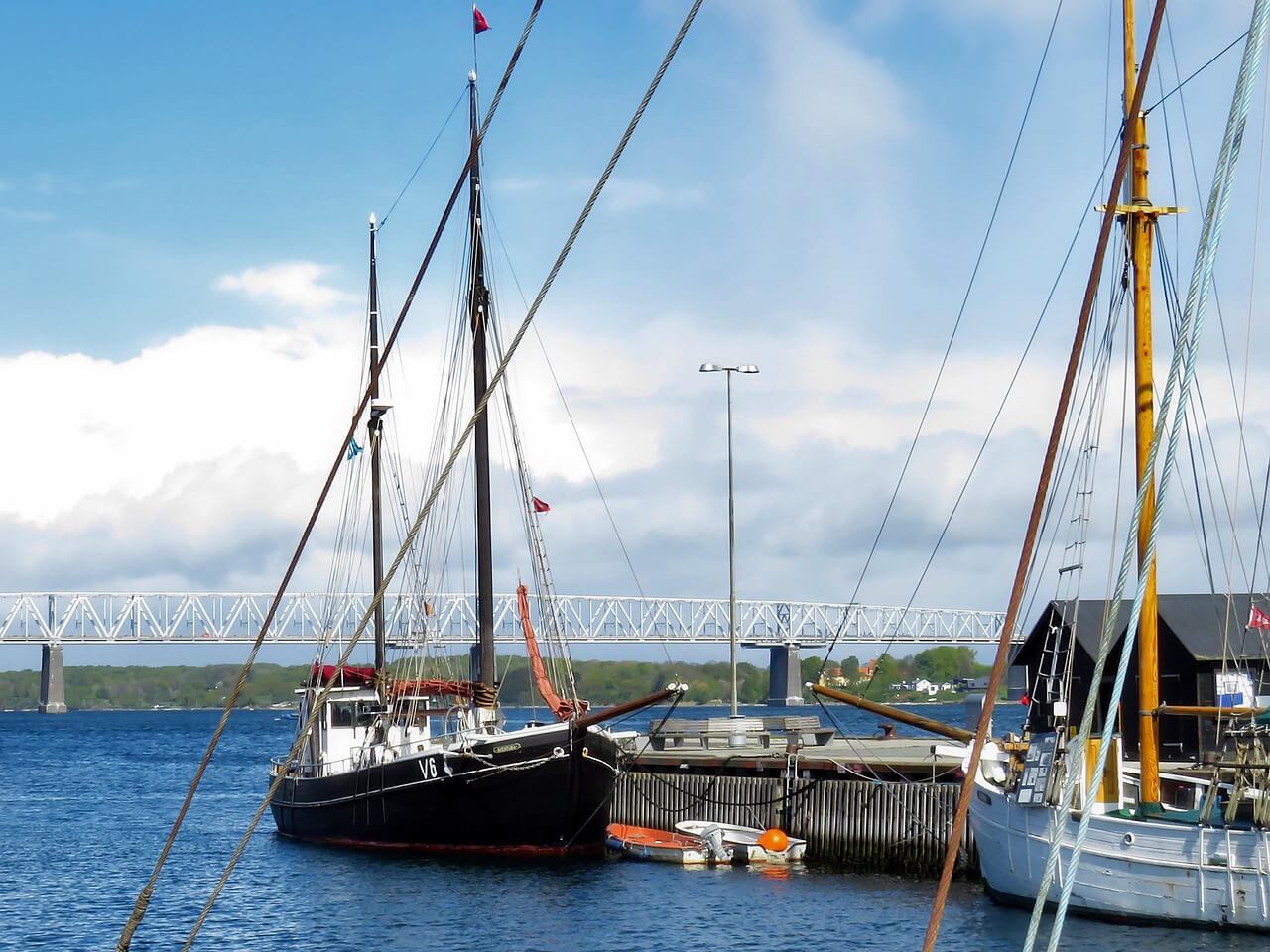
Little Belt
Nestled between Jutland and Funen, the Little Belt itself offers varied and often lively sailing conditions, with narrow channels, shifting currents, and stunning views of coastal villages, forests, and gentle farmland.
Tunø island (62 NM)
Tunø is a small, car-free island in the Kattegat, famous for its unspoiled nature, sandy beaches, and welcoming harbour. The island's landmark lighthouse doubles as a church tower, offering panoramic views over the surrounding sea and coastline.
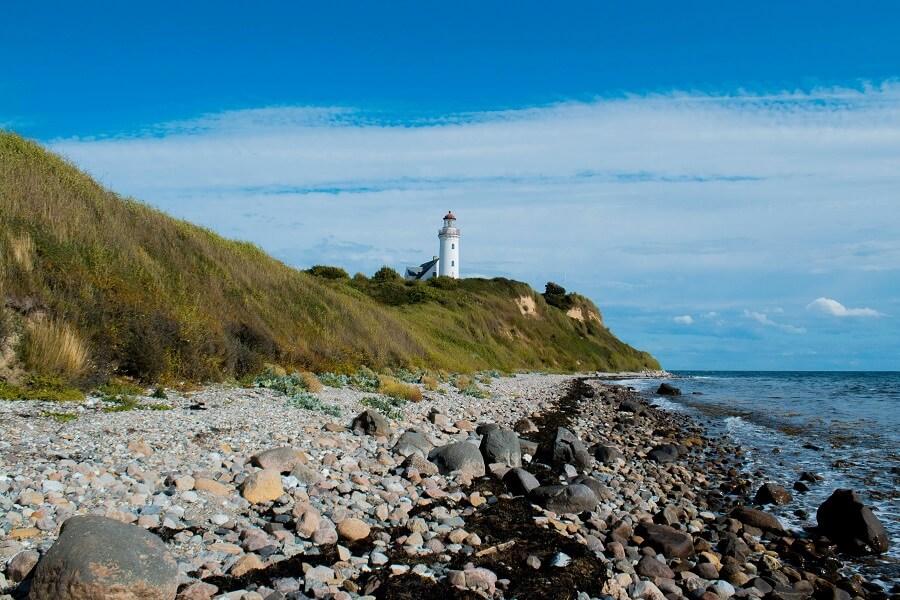
Tunø lighthouse
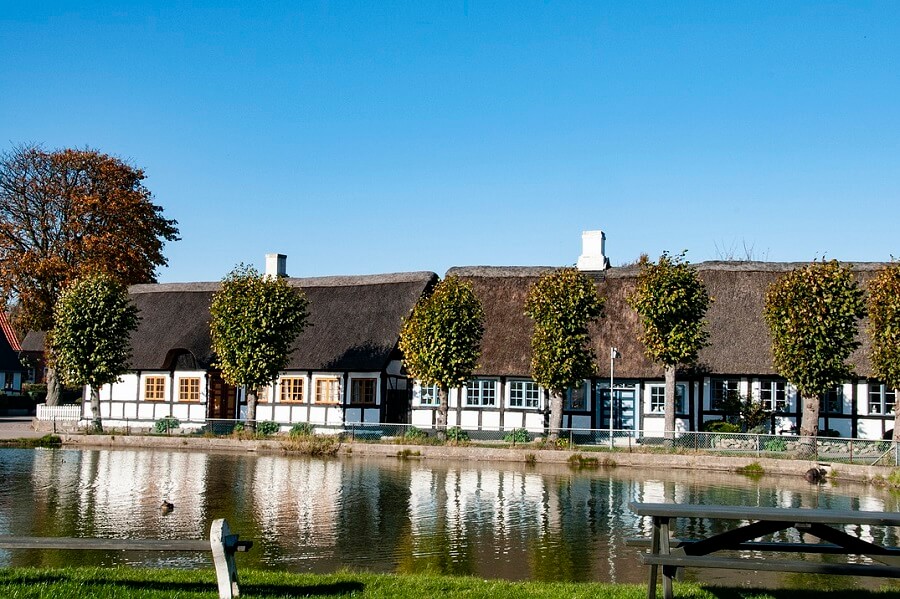
Houses in Tunø
With its peaceful atmosphere, rich birdlife, and scenic walking trails, Tunø is a perfect stop for sailors seeking a quiet, authentic island experience.
Mariager fjord (84 NM)
Mariager Fjord, often called Denmark's most beautiful fjord, winds its way through rolling hills, forests, and charming villages. At its heart lies the picturesque town of Mariager, known for its cobbled streets, half-timbered houses, and tranquil marina.
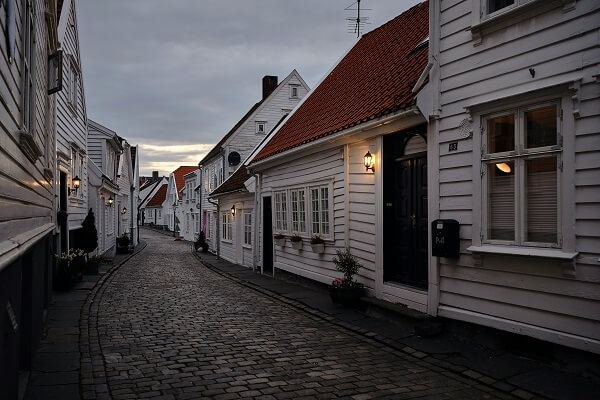
Mariager
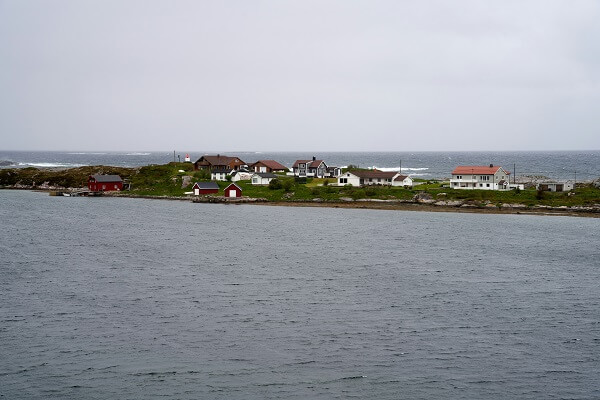
Entrance to Mariager fjord
A visit here offers not only safe mooring but also a chance to experience traditional Danish small-town life, with cosy cafes, a rose garden, and the old saltworks museum telling the story of the region's past.
Sejerø island (84 NM)
Sejerø is a peaceful island in the Kattegat, known for its gentle landscapes, long beaches, and friendly island community. The small harbour is a welcoming stop for sailors, offering a quiet, laid-back atmosphere and easy access to scenic walking trails and beautiful coastal views.
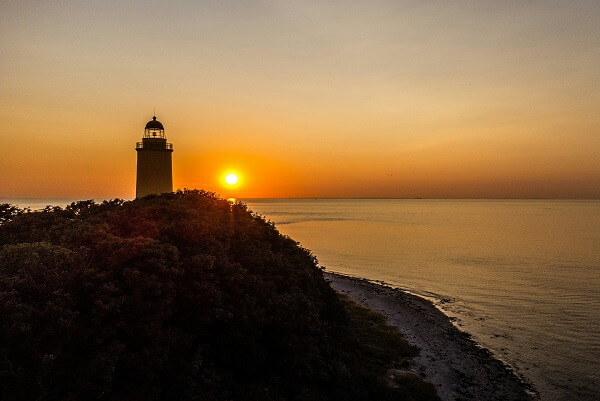
Sejerø lighthouse

Sejerø nature
Svendborg (62 NM)
Svendborg is a lively and characterful harbour town at the heart of the South Funen Archipelago, known for its rich maritime heritage and vibrant waterfront. The town's bustling marina is a popular meeting point for sailors, with cosy cafes, historic wooden ships, and a charming old town filled with cobbled streets and colourful houses.
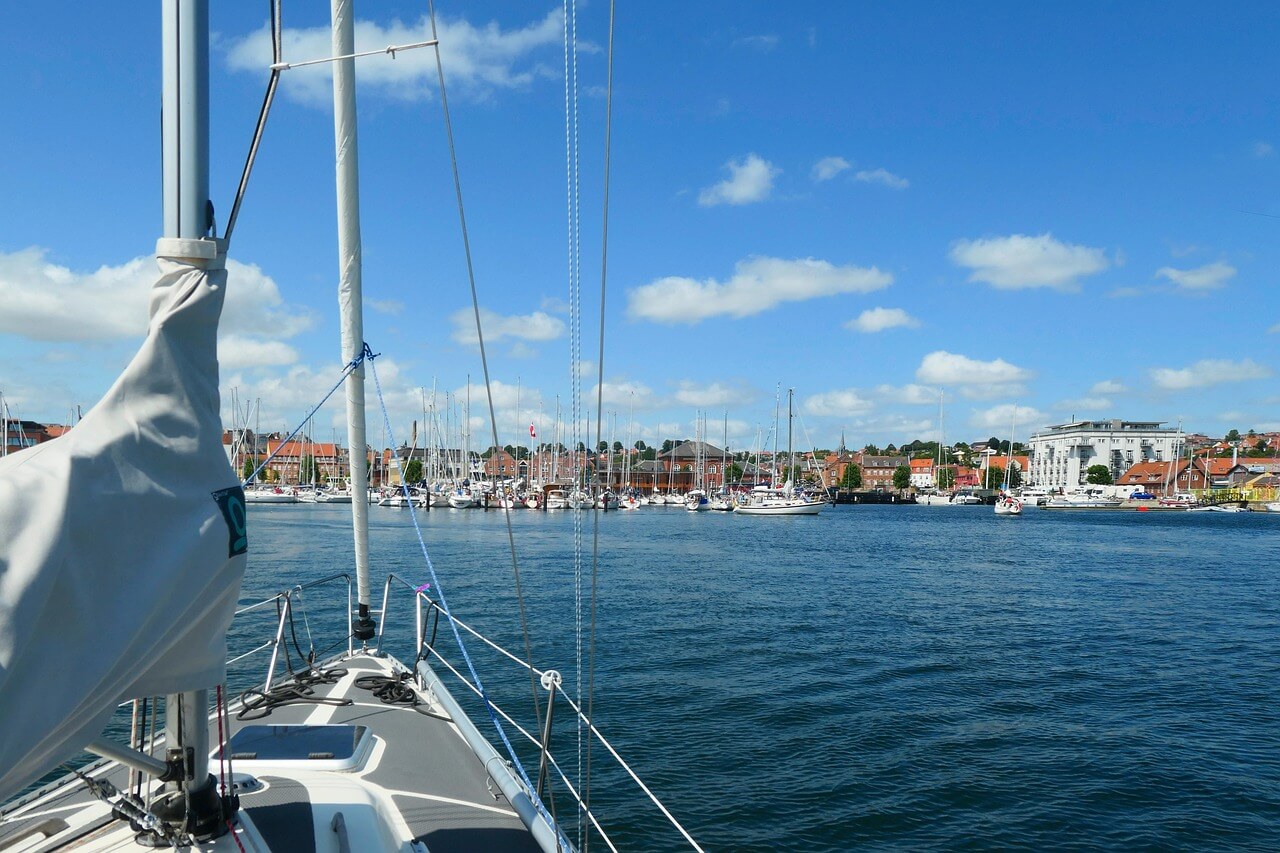
Svendborg harbour
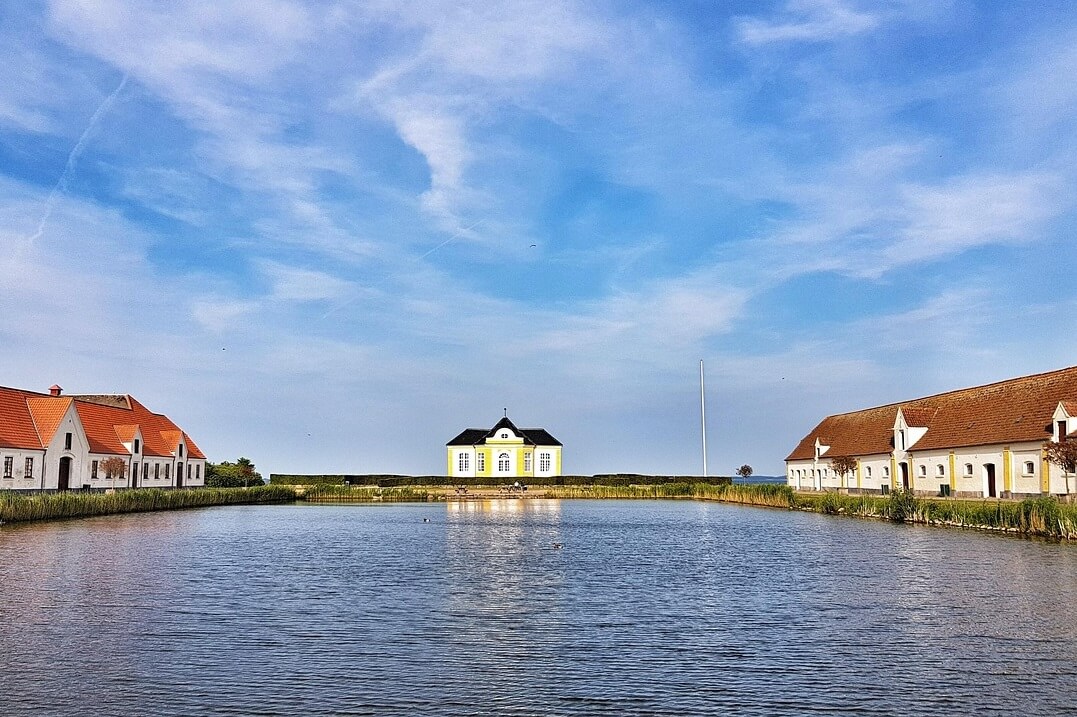
Valdemars slot
Flensburg (62 NM)
We will finish our trip in Flensburg, a historic port city nestled at the end of the Flensburg Fjord.
Check out the FAQ section for common questions.
Still have questions? Please don’t hesitate to contact us. We’d love to hear from you.
- Related articles:
- Routes